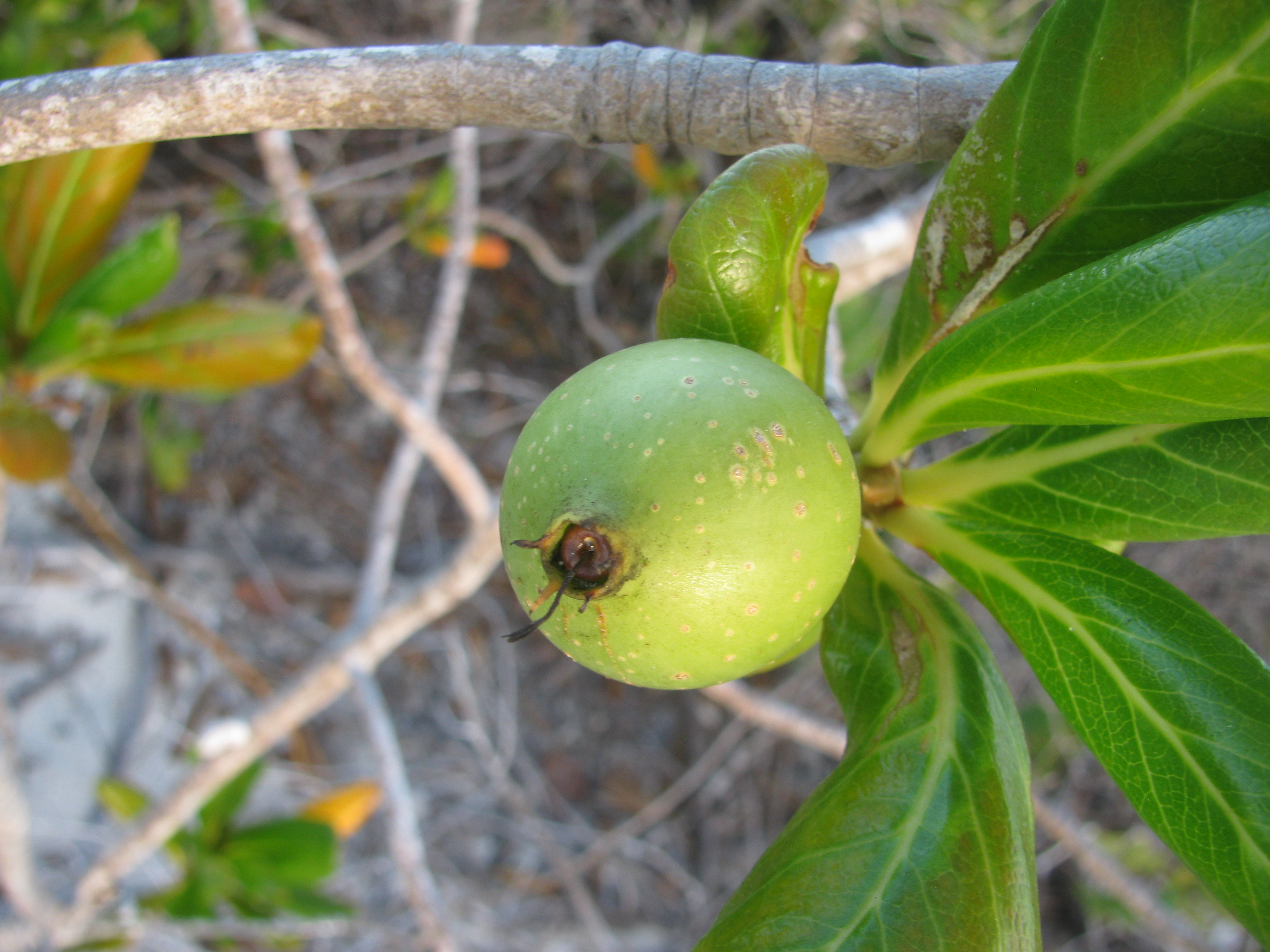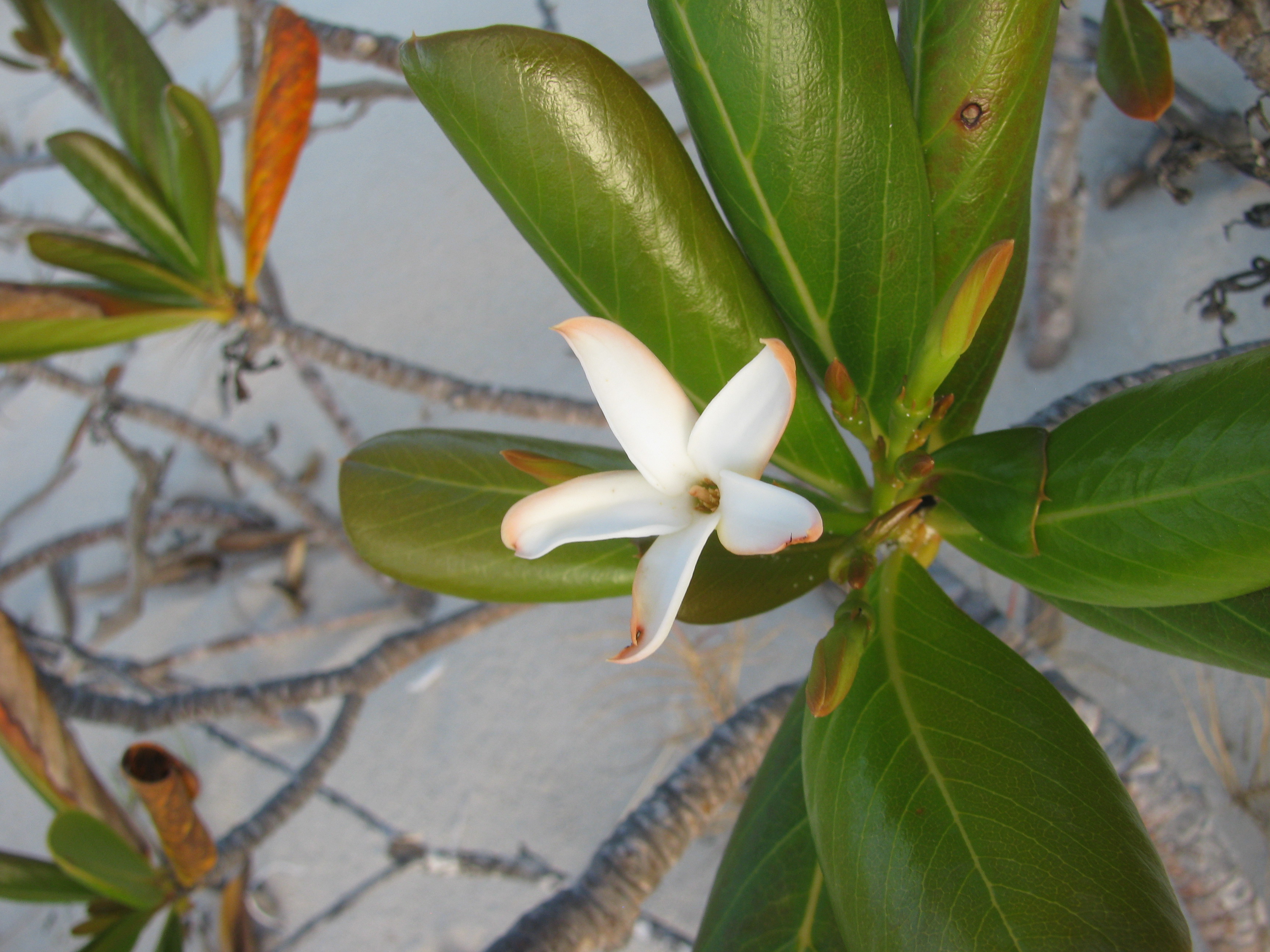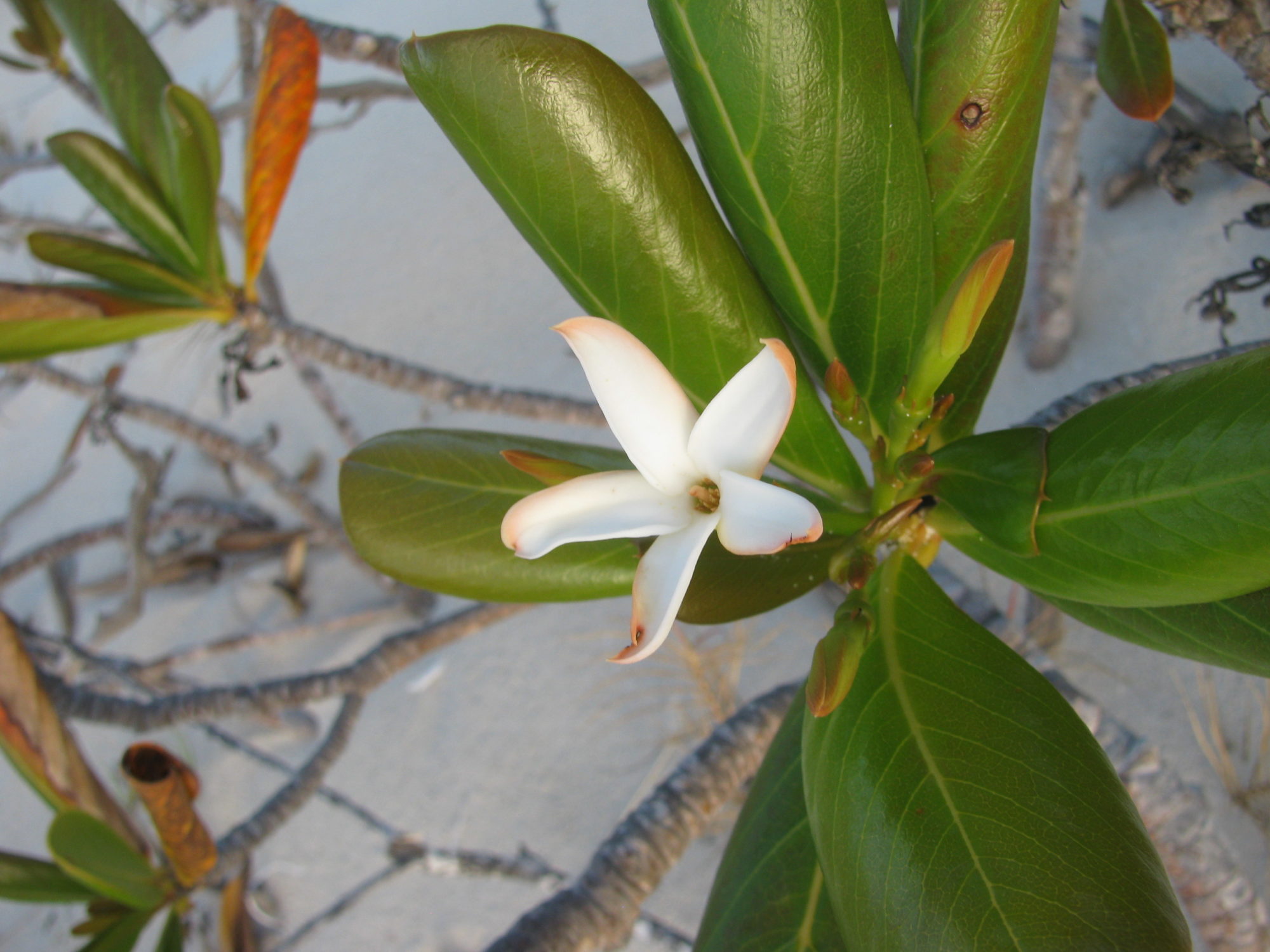Another beautiful and hardy Rubiaceae species found in the Caribbean is the sevenyear apple or Casasia clusiifolia. I saw these shrubs only a few yards from the ocean on Providenciales of the Turks and Caicos Islands. This plant has a few synonymous scientific names (such as Genipa clusiifolia), but I will use Casasia clusiifolia (USDA Plant Profile: Casasia clusiifolia).
Sevenyear apples are dioecious, which means a plant will only have male or female flowers. Thus, a male plant must pollinate a female plant for fruit production to occur. The flowers below seem to be female, as the male anthers are withered (University of Florida, Lee County Extension: Genipa clusiifolia).

This is a female flower, as the five anthers are dried up (Casasia clusiifolia, Rubiaceae)
These plants have large white flowers with five petals and five sepals. They produce edible fruits that are the size of a chicken egg. Most humans don’t like the taste of the fruit but iguanas do (Leon Levy Native Plant Preserve: Genipa clusiifolia). I learned that the fruits were edible after I left, so I didn’t get a chance to try one! The name sevenyear apple comes from the slow ripening of the fruit, as it can take almost a year for the fruit to turn brown and ripe (University of Florida, Lee County Extension: Genipa clusiifolia).

Notice the scar at the end of the fruit where the flower was. The scar includes five sepals and the dried style (the structure that connects the stigma, the landing pad for pollen, to the ovary) (Casasia clusiifolia, Rubiaceae)
Sevenyear apples are found in Bermuda, Florida and much of the Caribbean Islands. These plants are used for beach landscaping, as they can survive salty ocean spray (University of Florida, Lee County Extension: Genipa clusiifolia).

A young female flower. You can see leaf scars on the branches, which are characteristic of the Rubiaceae (Casasia clusiifolia, Rubiaceae)
